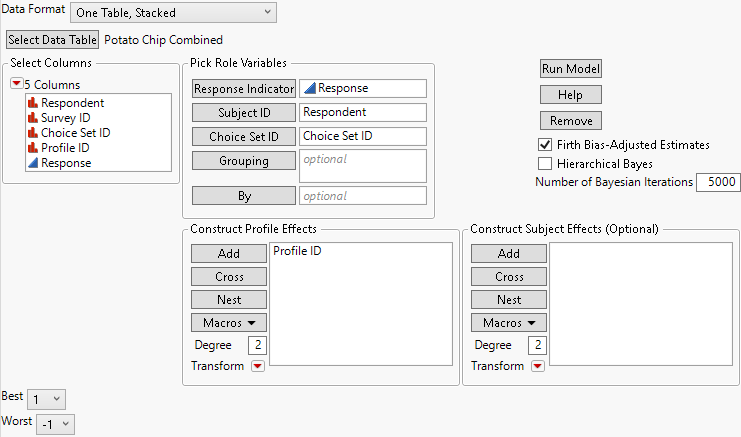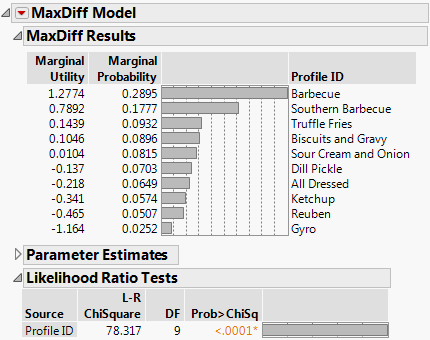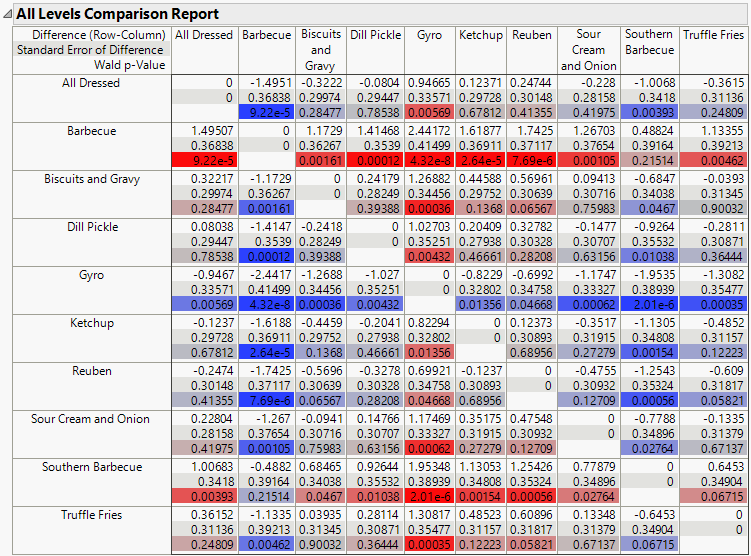One Table Format
1. Select Help > Sample Data Library and open Potato Chip Combined.jmp.
2. Select Analyze > Consumer Research > MaxDiff.
Note that the default Data Format is set to One Table, Stacked.
3. Click Select Data Table.
4. Select Potato Chip Combined and click OK.
5. Assign roles to columns to complete launch dialog:
– Select Response and click Response Indicator.
– Select Respondent and click Subject ID.
– Select Choice Set ID and click Choice Set ID.
– Select ProfileID and click Add in the Construct Profile Effects panel.
Figure 5.2 Completed MaxDiff Launch Window
Note that the setting for Worst choice changed to -1 when you specified the Response column as the Response Indicator variable.
6. Click Run Model.
Figure 5.3 MaxDiff Report for Potato Chip Combined.jmp
The report indicates that Profile ID is significant, indicating that preferences for the various chip types differ significantly. The highest Marginal Utility is for Barbecue chips. The estimated probability that Barbecue chips are preferred to other chip types is 0.2895.
7. Click the MaxDiff Model red triangle and select All Levels Comparison Report.
Figure 5.4 All Comparisons Report
Each comparison is the difference in estimated utilities between the chip type labeling the row and the chip type labeling the column. Small p-values are colored with an intense blue or red color, depending on the sign of the difference. For example, based on the blue colors across the Gyro row, you can see that Gyro chips have significantly lower utility than all other chip types. Barbecue chips have higher utility than all other chip types, though they do not differ significantly from Southern Barbecue chips.
Note: Because the All Comparisons Report p-values are not corrected for multiple comparisons, use them as a guide.


